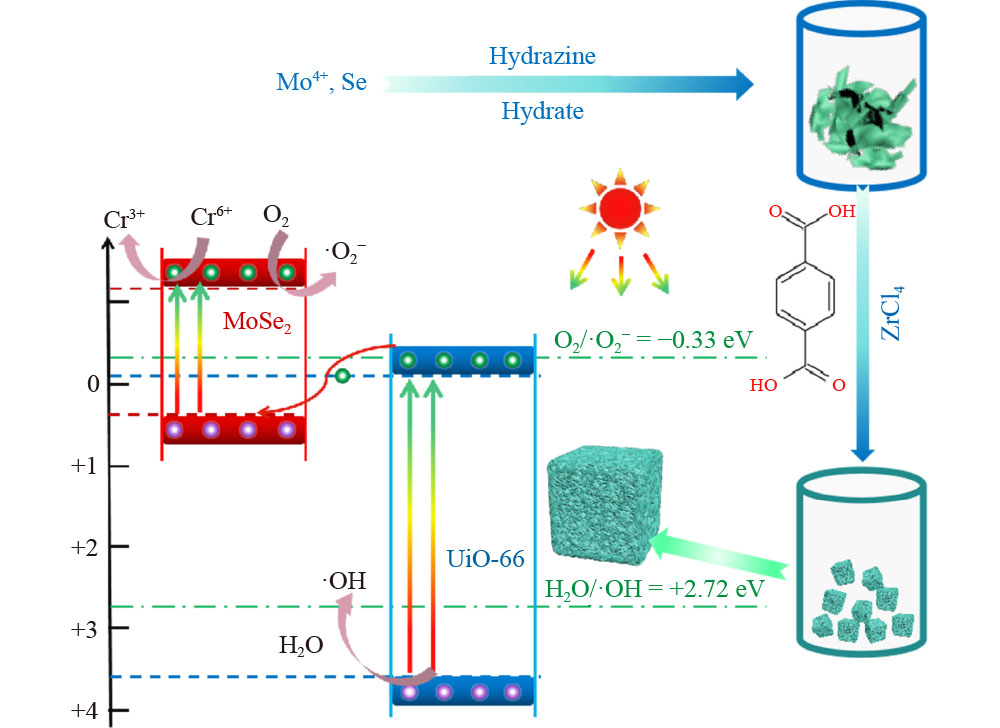XPS was conducted to determine the elements and their states in the samples (Fig.4). Fig.4(a) shows the high-resolution full spectrum of the prepared catalyst. Fig.4(b) shows the high-resolution spectra of Zr 3d in UiO-66 and ZM-23. UiO-66 exhibited two peaks at 184.75 and 182.35 eV, which were attributed to the presence of Zr in the Zr–O cluster [
19]. In comparison to UiO-66, the characteristic peaks of Zr in ZM-23 shifted to a higher binding energy, indicating an interaction between UiO-66 and MoSe
2. There were three main peaks for C 1s (Fig.4(c)), located at 284.7, 285.4, and 288.8 eV, which were attributed to the C sp
2 in the benzene ring, C–O, and O–C–O [
32], respectively. The center portion of the peaks at the center of 228.6 and 231.4 eV represented Mo
4+ (Fig.4(e) and
4(f)) [
33–
35], while the additional peaks in sample ZM-23 at 232.7 and 235.8 eV represented Mo
6+ [
36,
37]. Mo
6+ was formed by oxidation due to the higher activity of the Mo edge in MoSe
2 during the hydrothermal process [
36]. The defect formation of Mo
6+ had a certain influence on the photocatalytic reactions. Finally, the peaks for Se 3d represented Se
2+ in MoSe
2 (Fig.4(d)) [
31,
38]. In comparison to MoSe
2, the characteristic peaks of Mo and Se in ZM-23 shifted to a lower binding energy, indicating that photogenerated electrons transferred from UiO-66 to MoSe
2. The band structure was determined from the XPS spectrum (Fig. S1, cf. Electronic Supplementary Material, ESM), and which demonstrates that the valence band position/the highest occupied molecular orbital (HOMO) potential of MoSe
2 and UiO-66 were 0.366 and 3.61 eV, respectively.















